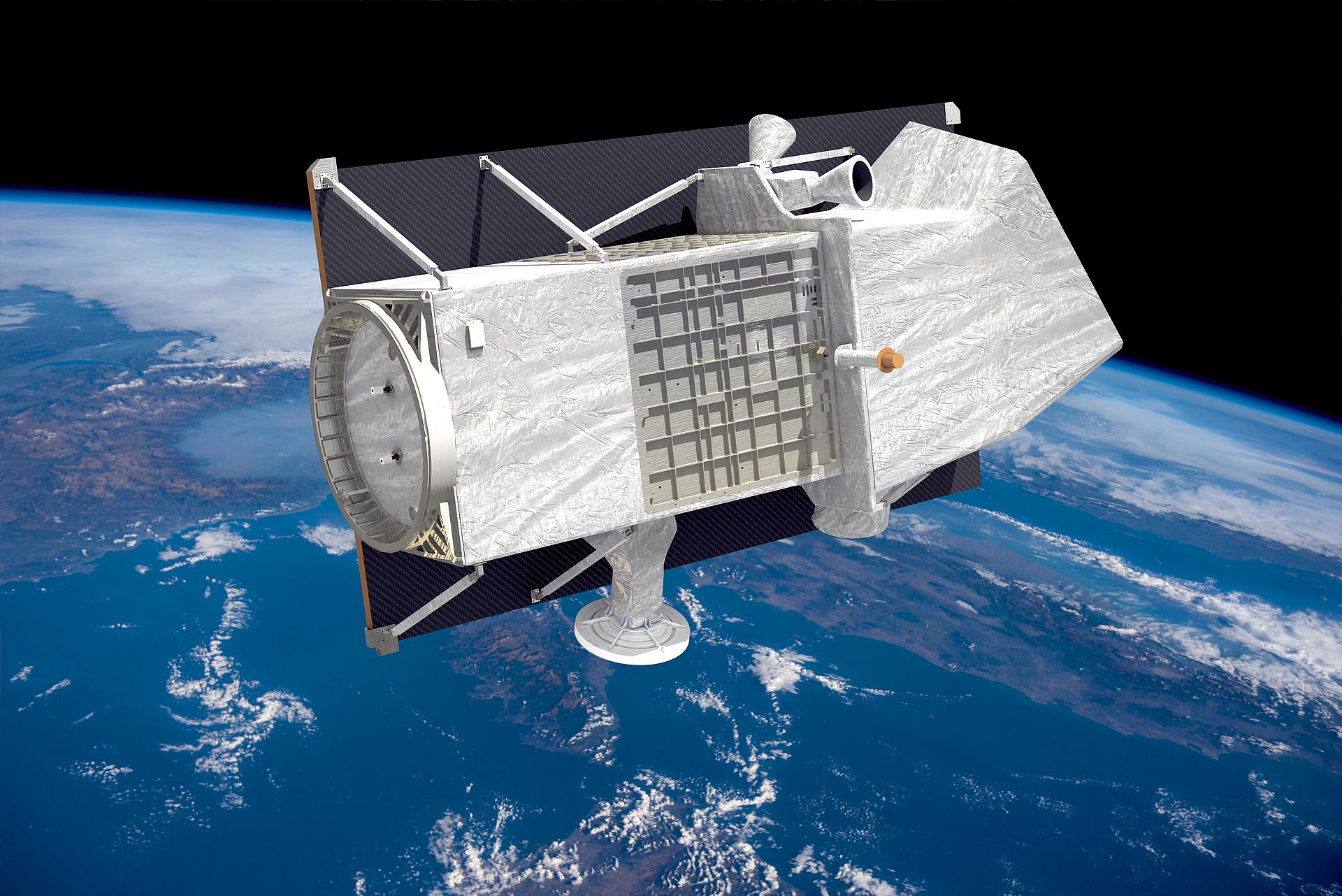Milan/Kourou, March 6, 2019. PRISMA is good to go: In the night from March 14 to 15, the earth observation satellite engineered by OHB Italia, a subsidiary of the space and technology group OHB SE, will embark on its journey into space on board a VEGA launcher. Owned by the Italian Space Agency ASI (Agenzia Spaziale Italiana), the satellite will be observing the earth with a hyperspectral optical sensor and collecting data for monitoring and predicting environmental changes on our planet. Launched from the Kourou European spaceport in French Guiana, the satellite will be monitoring the Earth on its sun-synchronous orbit at an altitude of about 620 kilometers. It has a launch mass of around 900 kilograms. PRISMA is the OHB Group’s first hyperspectral satellite.
PRISMA (PRecursore IperSpettrale della Missione Applicativa) is equipped with an innovative electro-optical instrument that combines an hyperspectral sensor with a medium-resolution panchromatic* camera. This combination offers the advantages of conventional earth observation by recognizing the geometric characteristics of a landscape but is additionally able to determine the chemical and physical properties of objects in the landscape through the use of hyperspectral sensors. Roberto Aceti, Managing Director of OHB Italia, said “we are proud to deliver the first European hyperspectral satellite to ASI. This satellite will open new frontiers on services and applications.”
PRISMA is watching you: satellite data can be used in many ways
Researchers and other users will be able to use the capabilities of PRISMA for different applications, including environmental monitoring, resource management, crop identification and classification, pollution control and possibly also homeland security.
The PRISMA satellite was assembled by OHB Italia integrating a payload supplied by the Italian space company Leonardo Airborne and Space Systems, OHB Italia is also responsible for the overall PRISMA mission comprising the ground, flight and space segments.
In contrast to conventional passive satellite sensors, which detect solar radiation reflected from our planet in a limited number of spectral bands (typically no more than a dozen), PRISMA is able to detect 240 bands (239 spectral bands plus the panchromatic channel). This will enable scientists to better understand natural resources and current environmental processes, such as climate change.
Even more “hyperspectral made by OHB”
OHB System AG is currently working on the first German hyperspectral mission EnMAP (Environmental Mapping and Analysis Programme) on behalf of DLR (German Aerospace Center). Imaging spectrometers measure the solar radiation reflected from the earth’s surface in a range from visible light to short-wave infrared. EnMAP can also be used to precisely determine the state of and changes in the earth’s surface. The mission is to commence in 2020 for a period of five years.
*Panchromatic sensors record the entire radiation spectrum in the visible light range (from around 400 nm blue-violet to around 700 nm red).
Contact for media representatives:
Marianne Radel
Head of Corporate Communications
Phone: +49 421 2020 9159
Email: marianne.radel@ohb.de
Contact for investors and analysts:
Marcel Dietz
Investor Relations
Phone: +49 421 2020 6426
Email: ir@ohb.de

